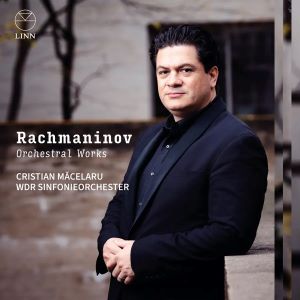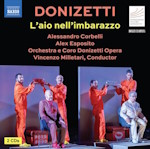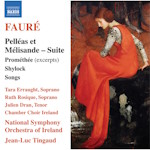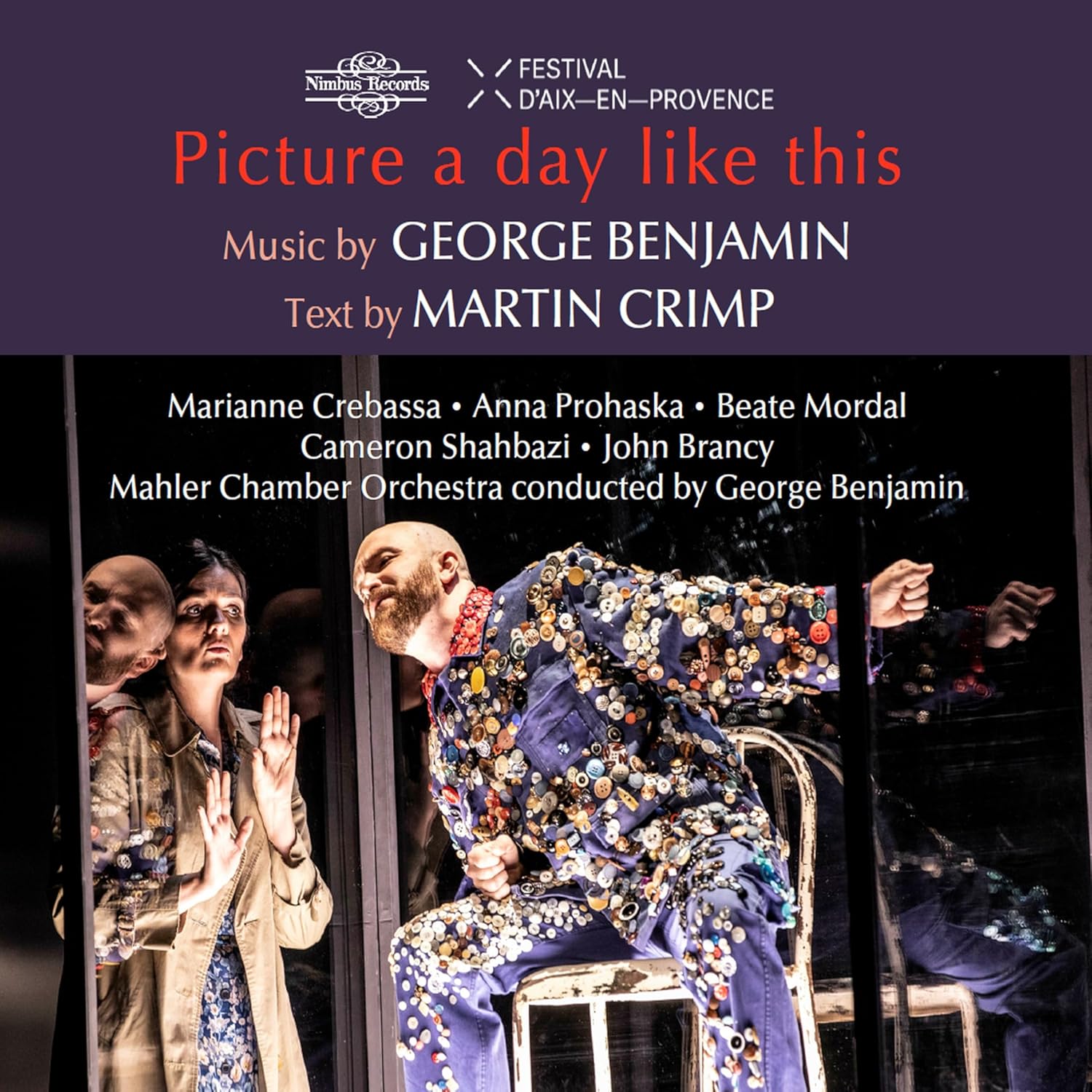
Sergei Rachmaninov (1873-1943)
Symphony No.1 in D minor Op.13 (1895)
Caprice bohémien Op.12 (1894)
Symphony No.2 in E minor Op.27 (1906)
Symphony No.3 in A minor Op.44 (1935)
The Isle of the Dead Op.29 (1909)
WDR Sinfonieorchester / Cristian Mặcelaru
rec. 2021/22, Kölner Philharmonie, Cologne, Germany
Linn CKD778 [3 CDs: 193]
Among many sets of Rachmaninov’s symphonies, this one is relatively unusual: a German orchestra in this repertoire. Not that this militates against the set – the ensemble is excellent. I had not encountered the Romanian conductor Cristian Mặcelaru earlier. He has an extensive European and North American history of working with the world’s finest orchestras. He manages to be simultaneously the Principal Conductor of three major orchestras and Music Director of two international festivals.
I am a little surprised that the Symphonic Dances have not been included: I think that the piece could have been fitted in. It is, after all, Rachmaninov’s most mature and probably most highly regarded orchestral composition, and it casts light on his development as a composer. It shares with the Third Symphony a rather more astringent style than is heard in the Second Symphony and the Isle of the Dead.
By way of compensation, we get the rarely performed/recorded Caprice bohémien. In a letter written in 1908, some fourteen years after its composition, Rachmaninov said that the thought of it “frightened him”, and that he hoped to find time to revise it. It is a pity that he never did. The work would have benefitted from the mature composer’s attention. There is, for example, the overlong sustained bass pedal in most of the first third of the work. Rachmaninov probably wanted to produce his own version of Tchaikovsky’s Capriccio Italien and Rimsky-Korsakov’s Capriccio Espagnole – and the piece has plenty of glimpses of the future mature Rachmaninov.
The performance is rather slow and powerful. The very fine orchestra allows us to appreciate the full strings playing a Rachmaninovian melody of lamentation (lento lugubre). It is taken up by a solo clarinet and then a flute. That bass pedal, present throughout the strings, clarinet and flute parts, becomes a slow drag on the proceedings by the time the flute finishes.
The central part of the work, more adventurous, develops motifs from the aforementioned flute melody, and reaches a passionate climax underpinned by trumpets and trombones. This andante passage is terminated by solo cello interrupted by clarinets and oboes, leading into the final lively dance section. This develops in a suitably exciting manner, but is adversely affected by too much repetition of a few short phrases. Nonetheless, it does come as a relief after the gloomy preceding sections. Mặcelaru drives the players to end this youthful orchestral foray by the up-and-coming Sergei Vasilievich in an eruptive, stunning manner.
The sad fate of the First Symphony is too well known for me to repeat here. Its miserable failure at the first performance – conducted by an allegedly drunken Glazunov – led Rachmaninov into a period of the loss of the will to compose. It was only with the composition of the Second Piano Concerto and Cello Sonata in 1901 that he regained his confidence.
The Symphony could almost be described as revolutionary in its use of motifs derived from Octoechos chants of the Russian Liturgy, and the occasional violent scoring in the finale. One wonders where he would have developed as a composer had the premiere been better performed. The Second Symphony, though quite wonderful, is very different, voluptuous and with heart-felt emotional effect.
Mặcelaru adopts a slowish but powerful take on this symphony, again abetted by the excellent orchestra. The first movement opens in an appropriately baleful manner: an emerging melodic germ is used throughout the work. The movement’s allegro, derived from this cell, contrasts noticeably from the second subject, somewhat languorous and highly Romantic as presented by the strings. The development section appears as a fugue. Its climax depends on trombones and tuba with slashing pizzicato chords, and a marching rhythm on horns, bassoons and clarinets. This can be quite exciting, and here it definitely is, with the unanimity of attack and articulation of the players. The first-rate recording provides the goods.
The scherzo requires much delicate orchestral playing, and more forceful, foreboding in the lower reaches. It becomes quite violent at times, not at all like the scherzi to be found, in say, Glazunov’s symphonies. The orchestra plays superbly, and the full recording is admirably clear.
The larghetto 3rd movement is the pace where one would expect to find a luscious Rachmaninovian melody, and there is one. The older Rachmaninov – who orchestrated the overwhelmingly gorgeous, slow movement of the second symphony – would have probably used the full romantic power of the strings here. But the young composer is far more restrained. The melody is introduced by the solo clarinet, followed by the strings in a much less effusive manner than in the later symphony.
Beautiful and tender though the melody is, and played here with exquisite delicacy, Rachmaninov follows it with a gloomy and unattractive theme for the lower strings and brass. That disrupts the natural flow of the movement, and I am glad when it is over with and the main theme returns, this time with a couple of cellos in counterpoint. The movement continues through this peaceful reprise of the lovely melody, and finishes, leaving this listener with a sense of having listened to orchestral beauty that was unnecessarily interrupted. I have felt this in all of the many recordings of the piece that I have listened to over the years. The WDR Orchestra, for all their undoubted excellence and exquisite string playing, are no exception.
The last movement is the glory of the work. If it is not played with a fair degree of abandon and, where necessary, sheer propulsive force, the performance can deprive the listener of one of the most viscerally exciting last movements in the Russian repertoire.
My favourite recorded performances are the two by Svetlanov. His last, on Japanese Exton OVCL00510 is by far better recorded though slower than his earlier Melodiya outing, now on Alto ALC1360 (review). Both, especially the earlier one, leave all comers in their wake.
Mặcelaru does not quite succeed, although he presents the sheer power of the movement, beginning with its memorably ferocious chant-like dance. There follows a section which contains another Rachmaninovian soaring string melody, and reminiscences of them from the preceding movements. The composer works up his orchestra into a memorable charging climax which is stopped in its tracks by a massive crash on the tam-tam – or so it should be. Recorded performances fail at this point if the tam-tam is unimpressive or the percussionist gently taps it. In the first case, the sound is tinny or shrill rather than deep-toned and full; in the second, the climax of the immediately preceding warlike charge becomes a whimper. Mặcelaru belongs to the latter school. He has a good deep-sounding tam-tam, but it just is not struck hard enough.
After the tam-tam comes the memorable, doom-laden largo coda. The cellos and bass drum slowly repeat a short phrase accompanied by the tam-tam. It is vital that it can be heard amongst the rumble and thunder. Here Mặcelaru scores well: the last page of the symphony is suitably crushing as we are carried forward into the malevolent abyss!
The Third Symphony may be the least often performed these days. It has never gained the popularity of its predecessors nor its successor, the Symphonic Dances. It does have one of Rachmaninov’s fine tunes as the second subject of the first movement, the whole of which is played here quite slowly at 18 minutes. Anyone who thinks that Rachmaninov did not do much in the second movement really needs to listen to the WDR orchestra’s exquisite sounds at the opening section of what proves to be a mix of slow movement and scherzo. A solo horn with luscious accompanying chords for harp leads to sections for solo violin, a melody that rises in the full violins and then the solo flute. It is all wonderfully Romantic and delightful. It soon disperses into a mercurial shower from which the main theme emerges in a riotous, vivacious musical carnival. And so it continues until the themes from the opening section are reintroduced.
The last movement has been criticised as tuneless. To be frank, that is not far from the truth. It succeeds by demanding virtuoso playing from the orchestra in colourful thematic snips and a demanding fugue. Eventually, Rachmaninov’s regularly used Dies irae theme appears through to the end; these pages are as rhythmically colourful as anything he ever wrote. The orchestra under Mặcelaru’s control really is firing on all cylinders. That, and the excellent recording, allowed me to enjoy the entire performance immensely.
The Second Symphony is very popular, and rightly so. It was not always the case. I believe that the renowned 1973 recording by the virtuoso LSO under André Previn paved the way for more and more recordings and performances. The appearance in the UK of Classical Music on radio, presented with content less highbrow than the fare programmed by Radio 3, may also have contributed to the Symphony’s increasing popularity. The music is positively crammed with luscious melody in every movement. Even the trio of the scherzo has a melody that most composers might have reserved for the slow movement.
The slow third movement andante is rightly lauded as a high point of the Russian repertoire. It can only have been a sort of critically highbrow sneering that permeated much of the classical music establishment from about 1940, which kept it away from concert halls and the recording studio. Things are different now. There are many recordings by most professional orchestras on most record labels. So, a new recording has to have something special about it to be competitive.
I have noted the orchestra’s magnificent playing. Here the strings really sing with exquisite coordination. Mặcelaru adds a timpani stroke on the first movement’s final note. It is not in the score which shows that Rachmaninov wrote the ending as a sustained chord in the strings, winds and brass. The conductor does not linger in any of the movements, and the andante is one minute faster than Previn, but gosh, the climax of that movement is just so satisfying. As in all the other works presented here, the recording is especially fine. One would expect that from a company like Linn which has a long pedigree in hi-fi.
So, would I buy this set? Yes, I would if I were not such a fanatic about the conclusion of the last movement of the First Symphony. As it is, it will grace my shelves because the Isle of the Dead, the Second Symphony and the Third Symphony are so well performed and recorded.
The booklet contains photographs, mostly black and white, a discussion of the music and a brief bio of the conductor and orchestra. All the orchestra members are listed.
Jim Westhead
Buying this recording via a link below generates revenue for MWI, which helps the site remain free


















